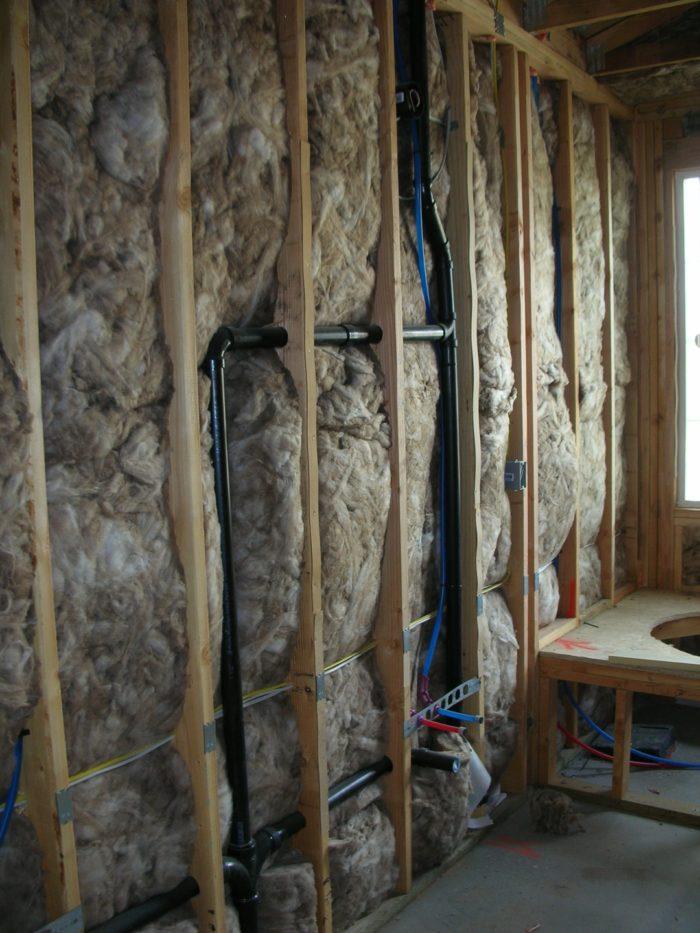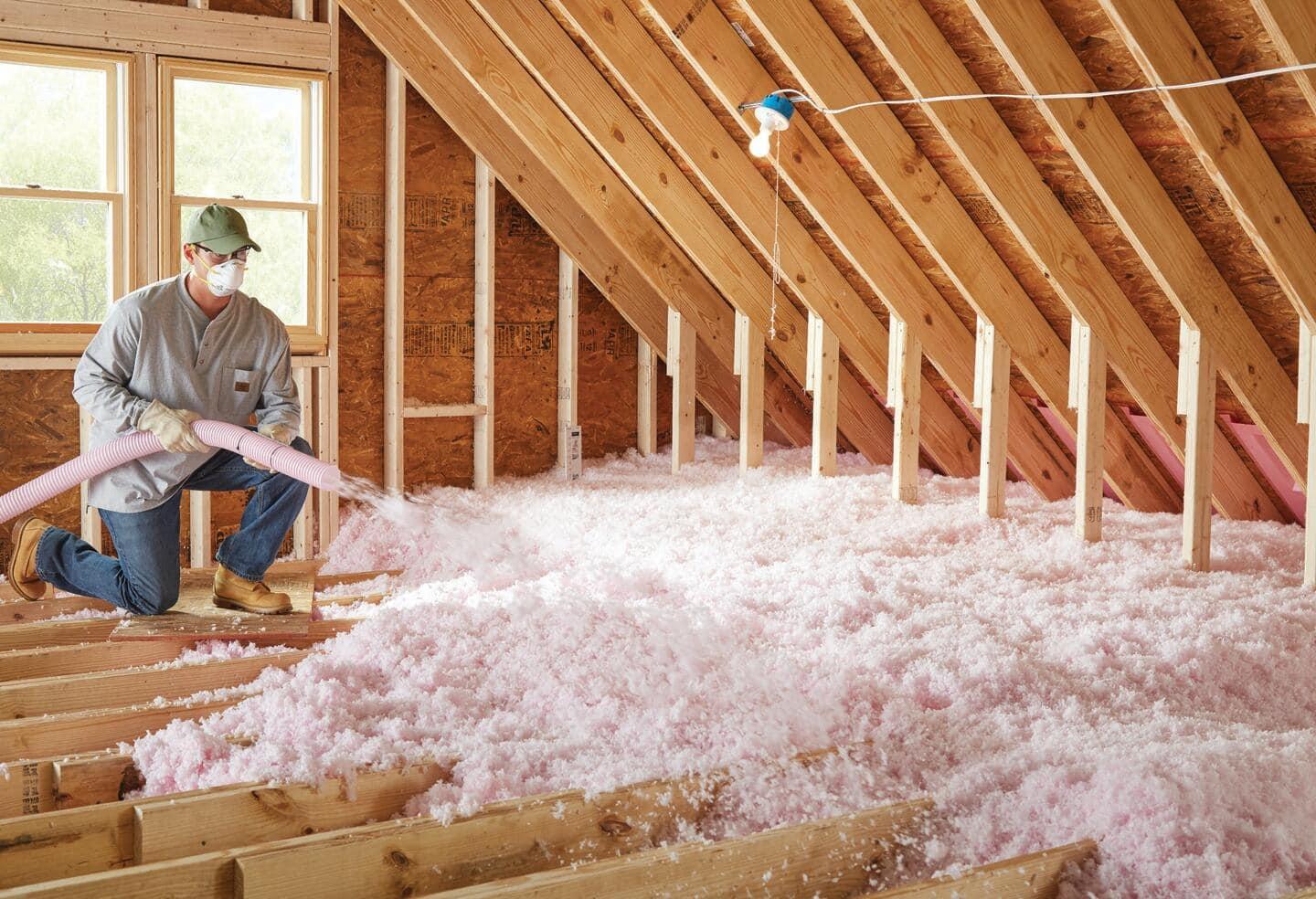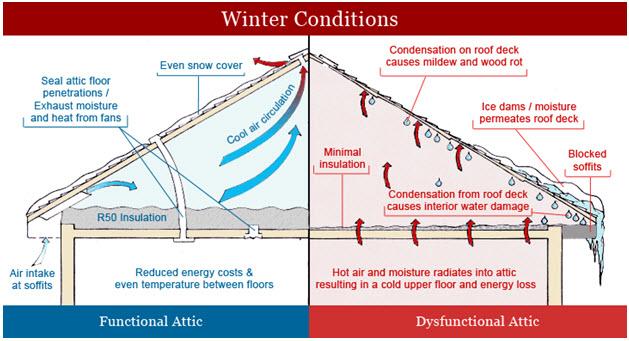Imagine stepping into a cozy oasis on the hottest day of summer, where the oppressive heat of the outside world melts away into a cool, refreshing breeze. Now, picture the exact opposite—a space where your air conditioning system is running full throttle, but rooms still teeter on the brink of unbearable warmth. The secret ingredient that makes all the difference? Proper insulation.
As homeowners increasingly turn to mini split AC systems for their unparalleled energy efficiency and targeted cooling, one crucial element often flies under the radar: the necessity of proper insulation. This unassuming component plays a starring role in ensuring that your air conditioning investment not only meets but exceeds your expectations. In this article, we’ll uncover the unsung hero of HVAC comfort, exploring why proper insulation is essential for mini split AC installation. From energy savings to consistent temperatures and prolonged system life, discover the profound impact that insulation can have on your indoor climate.
Understanding the Role of Insulation in Mini Split Efficiency
Proper insulation plays a vital role in optimizing the performance and efficiency of mini split air conditioning systems. Insulation minimizes unwanted heat transfer, keeping cool air inside during the summer and warm air during the winter. This helps the mini split system work less hard, resulting in lower energy consumption and reduced utility bills. Here are some benefits of good insulation:
- Energy Savings: Reduces the workload on your AC, leading to decreased electricity usage.
- Enhanced Comfort: Maintains consistent indoor temperatures, eliminating hot or cold spots.
- Longevity: Preserves the system’s lifespan by preventing overuse and wear and tear.
Without adequate insulation, mini split systems face increased strain as they struggle to maintain desired temperatures. This can lead to higher operational costs and increased wear on the unit. To ensure optimal performance, it’s critical to focus on:
- Wall Insulation: Properly insulated walls prevent heat exchange between indoor and outdoor environments.
- Window Sealing: Sealing gaps around windows and using double-glazed glass reduces drafts and energy loss.
- Pipe Insulation: Insulating refrigerant pipes helps maintain efficiency by minimizing temperature loss.
For a quick overview, here is a comparison table highlighting the impact of insulation on mini split efficiency:
| Insulation Level | Energy Consumption | System Wear | Indoor Comfort |
|---|---|---|---|
| High | Low | Low | High |
| Moderate | Moderate | Moderate | Moderate |
| Poor | High | High | Low |

How Poor Insulation Affects Performance and Longevity
When a mini split AC system is installed without proper insulation, the unit faces a myriad of challenges that can significantly degrade its performance and shorten its lifespan. Inefficient insulation can lead to unnecessary heat exchange, forcing the system to work harder to maintain the desired indoor temperature. This not only results in higher energy consumption but also accelerates wear and tear on critical components. Over time, the increased operational strain can cause premature failure of key elements such as the compressor, fans, and control boards, necessitating costly repairs or even full system replacement.
Additionally, poor insulation often leads to condensation issues, particularly around the piping and junctions. This can result in excessive moisture buildup, fostering an environment for biological contaminants such as mold and mildew. Potential consequences include:
- Degraded air quality, impacting health
- Water damage to walls and ceilings
- Increased maintenance costs
To better understand the impact, consider the comparison below:
| Aspect | Proper Insulation | Poor Insulation |
|---|---|---|
| Energy Efficiency | High | Low |
| Component Longevity | Extended | Shortened |
| Maintenance Frequency | Low | High |

Expert Tips for Optimizing Insulation in Your Home
Ensuring proper insulation is pivotal for the effective functioning of your mini split AC. **Adequate insulation prevents thermal bridges**, minimizing heat loss during winter and keeping the cool air inside during the summer. This efficiency means your mini split AC unit won’t have to work as hard, ultimately reducing energy consumption and lowering utility bills. It’s a smart investment not only for your comfort but also for your pocket and the environment.
Here are some expert tips to optimize insulation in your home for a mini split AC installation:
- Seal Gaps: Inspect areas around windows, doors, and wall junctions for any gaps or cracks and seal them using caulk or weatherstripping.
- Upgrade Insulation Material: Consider upgrading to spray foam or fiberglass batts for better thermal regulation.
- Insulate Ductwork: If your mini split is part of a zoned system, insulate the ductwork to prevent energy loss.
- Use Insulating Blinds or Curtains: These add an extra layer of insulation, particularly crucial for large windows.
Below is a table summarizing the key insulation methods and their benefits:
| Insulation Method | Benefits |
|---|---|
| Sealing Gaps | Reduces drafts, improves energy efficiency |
| Upgraded Insulation Material | Better thermal control, lower energy costs |
| Insulated Ductwork | Prevents energy loss, improves system efficiency |
| Insulating Blinds/Curtains | Enhances interior comfort, reduces heat gain/loss |

Choosing the Right Insulation Material for Your Mini Split System
Selecting the ideal insulation material is crucial to ensure the efficiency of your mini split AC system. The right insulation will maintain the desired temperature in your space, reduce energy consumption, and prevent condensation issues. **Closed-cell spray foam**, **fiberglass batts**, **polyiso boards**, and **foam pipe insulation** are among the popular choices. Each material comes with its own benefits and drawbacks. For example, closed-cell spray foam provides excellent air sealing and moisture resistance but can be more expensive and requires professional installation. On the other hand, fiberglass batts are easier to install and more cost-effective but may not offer the same level of moisture control or air sealing.
**A Closer Look at Insulation Materials**:
| Material | Advantages | Drawbacks |
|---|---|---|
| Closed-cell Spray Foam |
|
|
| Fiberglass Batts |
|
|
| Polyiso Boards |
|
|
| Foam Pipe Insulation |
|
|
Q&A
Q&A: Why Proper Insulation is Essential for Mini Split AC Installation
Q: Why is insulation so important for a mini split AC system?
A: Insulation for a mini split AC system is like the unsung hero of your home’s climate control. Proper insulation helps maintain a consistent temperature, reducing the workload on your AC. This leads to greater energy efficiency and lower utility bills. Insulation ensures that the cold air stays in and the hot air stays out, creating a comfortable environment inside your home.
Q: What are some key benefits of having proper insulation in place for a mini split AC?
A: There are multiple benefits to having proper insulation. Firstly, it enhances the efficiency of your AC unit, allowing it to perform at its best. Secondly, it extends the lifespan of the system by preventing it from overworking. Thirdly, it can lead to significant cost savings on your energy bills. proper insulation can contribute to a quieter indoor environment because the AC system doesn’t have to run as often.
Q: What kinds of insulation are typically used in mini split AC installations?
A: The types of insulation used can vary, but commonly, you’ll find foam pipe insulation, fiberglass, and rubber insulation being used. Foam pipe insulation is often employed for the refrigerant lines, while fiberglass can be used for walls and attics to create a barrier against outside temperatures. Rubber insulation is resistant to moisture and is particularly useful in more humid environments.
Q: Are there specific areas where insulation is more critical during a mini split AC installation?
A: Absolutely. Key areas include the refrigerant lines, which should always be insulated to prevent condensation and energy loss. The walls and attic space around the unit should also be well-insulated. Additionally, if the indoor unit is placed in a room with large windows, insulated curtains or thermal blinds can be very beneficial.
Q: How can improper insulation impact the performance of a mini split AC?
A: Improper insulation can lead to a multitude of problems. The system may have to work harder and longer to achieve the desired temperature, leading to higher energy consumption and utility bills. It could also result in uneven cooling or heating, causing discomfort. Inadequate insulation may also contribute to the build-up of moisture, which can lead to mold and damage both the AC unit and your home structure.
Q: What steps can homeowners take to ensure their mini split AC is properly insulated?
A: Homeowners can start by consulting with a professional HVAC technician who can assess the insulation needs specific to their home. Using high-quality materials and ensuring all critical areas are covered will make a significant difference. Periodic checks and maintenance will also help in sustaining its efficiency. Additionally, homeowners can invest in energy-efficient windows, doors, and other elements that complement the insulation of their mini split AC system.
Q: Are there any standards or guidelines that homeowners should follow for mini split AC insulation?
A: Yes, there are several building codes and standards that outline the requirements for insulation in HVAC installations. For instance, the R-value, which measures insulation’s thermal resistance, should be appropriate for your climate zone. Homeowners should also look for products that comply with local building codes and energy efficiency guidelines, such as those set by the Department of Energy or ENERGY STAR.
Q: Can proper insulation also improve indoor air quality with a mini split AC?
A: Indeed, proper insulation can assist in bettering indoor air quality. By sealing gaps and preventing outside air from entering, you reduce the influx of allergens, pollutants, and humidity. An efficiently operating mini split AC with proper insulation helps to circulate clean and filtered air, maintaining a healthier indoor environment.
Concluding Remarks
As we venture through the realms of modern comfort, the wisdom of proper insulation unfolds as a vital companion for mini split AC installations. Just as an artist requires the right canvas, your cooling system deserves an environment crafted with care. By embracing the nuances of insulation, you not only pave the way for peak performance but also paint a picture of energy efficiency and tranquility.
Season after season, a well-insulated space will echo with the whispers of regulated temperatures and harmonious living. It’s not just about staying cool or warm—it’s about creating a sanctuary where comfort knows no bounds. So, as you contemplate the next steps in your installation journey, let the pillars of proper insulation guide you towards a haven of sustained serenity.
it’s the unseen layers of protection that make all the difference, turning your home into a fortress against the elements and a cradle of consistent comfort. Because in the grand tapestry of home improvement, insulation is indeed the invisible hero, ensuring your mini split AC lives up to its fullest potential.

